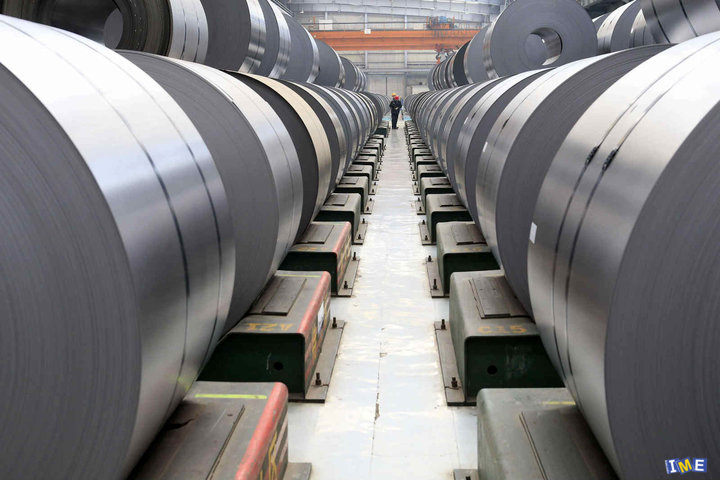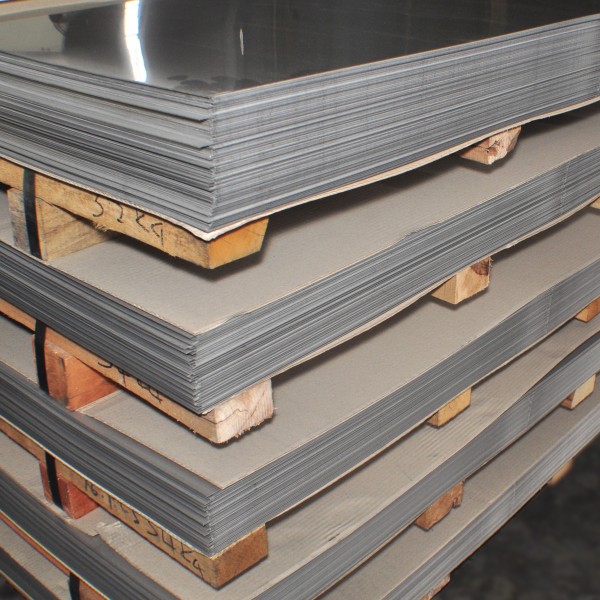Cold rolling raw steel sheets with hardening ability
steel sheets are medium-carbon steel or high-carbon steel which are cold-rolled, and which is made by thermal furnaces, soft and annealed that has a smooth, polished surface and has elasticity and flexibility, and it has a hardness of up to 550 Vickers.
Grade: CK10-CK22-CK30-CK35-CK45-CK55-CK60-CK67-CK75-CK85-CK101-CRV(51CRV4)-42crmo4-SCM435M


- Hardness: Up to 200 Vickers
- Thickness: 0.1 to 6 mm
- Width: from 5 mm to 1245 mm
- Cutting length: up to 6 meters in length
- Surface quality: Glossy
- Coil weight: according to customer’s request
Features:

- سختی: نهایت 200ویکرز
- ضخامت: از 0.1 تا 6 میلیمتر
- عرض: از 5 میلیمتر تا 1245 میلیمتر
- طول برش: نهایت 6متر طول
- کیفیت سطح: براق
- وزن کویل: بنا به سفارش مشتری
Usages and applications
The above mentioned sheets are used for the manufacture of parts and assemblies of automobiles such as (types of gaskets, types of spring clamps, common and spinous spring, seat belts parts, horn parts, lock sets, bead, discs and clutch plates, seat parts and chair rails, Car parts), – Types of military parts (various types of gun cartridges, types of weapons parts, such as stocks for weapons, body parts and reinforcements for weapons and cartridge clip, etc.) – Shoes and textile (shoe heels spring and all types of textile machinery parts …) – Household appliances (all types of refrigerator accessories, vacuum cleaner, gas voltage spring and various types of oven units, dishwashers and washing machines) – Building components (all kinds of shovels) – Agriculture (all types of lawn mowers blades and combine blades and Agricultural machinery parts).
Cold rolling:
Usually used to produce sheets and straps with surface polishing and dimensional accuracy, the process of forming is also used to increase the strength of the sheet through mechanical work.
After acid washing, the process of reducing thickness or deformation is performed through the cold rolling process on sheets made by hot rolling with a minimum thickness.
So, it can be said that the application of cold rolling is to reduce the thickness with the desired dimensional accuracy of steel sheets and also to remove the yield point. But what is the yield point? Yield point causes the heterogeneous deformation conditions in the process of forming and, in particular, deep drawing, which is an important issue. Carrying out several mechanical work by rolling which is named annealing rolling will remove the yield point. The purpose of cold rolling is to reduce the thickness of the sheet under very high pressure, which is usually carried out at room temperature and up to 200 ° C.
Another use of cold rolling is to flatten the sheets, in this way a roller consisting of two rollers with a small diameter, reduces the curvature of the sheet formed in the previous process and, becoming smooth after come out of the smooth roller.
Characteristics of the Cold rolling process: Increasing the hardness of the desired material, increasing the dislocations in the crystalline structure, increasing the yield stress.
Benefits of Cold Rolling: Lubrication is easier to perform. In the absence of cold and oxidation, lower tolerance and better surface polishing are achieved.
Application of cold rolling products: automotive, home appliances such as refrigerators, ovens, dishwashers and washing machines, electrical equipment for tanks, construction equipment.
Rolling types:
Continuous rolling: If the volume of production is the initial investment cost, products are produced through continuous rolling. In continuous rolling, the amount of material which at a time (at a certain time) passes from each roller is the same. Therefore, if the cross-section is smaller or larger, the speed of the rollers is more or less proportional to it, so that the change in the thicknesses and lengths of control at different stages is balanced. Its application is production of sheets and rebar.
Ring rolling: By reducing the thickness of the ring, the diameter increases. In the ring rolling process, the external roller exerts force and velocity, and the inner roller circulates freely; So the ring’s thickness gradually decreases and the diameter rises. So the width of the ring is not usually an issue. Application: Rocket, turbine, airplane, aerospace industry, plumbing and pressure vessels. This type of rolling is part of the cold rolling process, and its applications can be referred to as spiral gears rolling.
Spring steel
Spring steel is a low alloy steels, with high strength. Over the last two decades there have been numerous attempts to build high spring steel. Significant properties such as good ductility, optimum toughness at ambient temperature, high fatigue strength, bending resistance, and high lamination capability make these types of steel an essential engineering component.
The mechanical properties of these steels depend heavily on the microstructure of sedimentation and their recrystallization characteristics. On the other hand, the application of thermo-mechanical operations has always been a very good method for controlling microstructure and improving the mechanical properties of the final steels. In this study, the hot-workability of a steel containing chromium, silicon and manganese has been investigated using high-pressure tests. The experiments were carried out at a temperature range of 850 to 1150 ° C, and the results show the effect of temperature and strain rate on the characteristics of the hot work of this steel in the thermal range test. Steels that are suitable for any spring component due to the elasticity caused by the effect of cooling in oil or water and then returning it. This elasticity is due to elastic deformation, which enables it to be brought up to a certain extent and under the load without permanent deformation after being removed from the load. Most of the properties in the springs are obtained by adding alloying elements such as silicon, manganese, molybdenum and vanadium to carbon-containing melt and heat treatment, ie hardening by cooling in water or oil and then returning immediately afterwards.
Factors affecting the choice of spring steel
Each spring steel must be selected according to the operating conditions and the load to which it is applied.
Spring Steel Properties
The properties of spring steel may differ slightly from before and after production. At the same time, four essential features for the construction of the spring are:
- Good ductility
- Lack of defects
- Low costs
- Accessibility
But after creating the spring, the expected properties are:
- High mechanical strength, especially elasticity
- High resistance to fatigue
- Suitable elastic modulus
- High resistance to corrosion
Here are some examples of high-consumption steels from this group of steels.
CK67 (1.1231)- CK75 (1.1248)- CK85 (1.1269)- 55CR3 (1.7176)- 50CRV4 (1.8159)- 67SICR7 (1.7103)- 60SICR7 (1.7108)- 55SI7 (1.5026)- 70CR2 (1.2007)
Properties: Very good strength, moderate hardness, good elasticity, abrasion resistance and corrosion resistance.
Application: Cold rolling steel straps for spring with precise sizes and very good surface quality, Preheat temperatures: 150-200 ° C Welding electrode – OK38.48 Heat…
۱٫۵۰۲۸ – ۶۵Si7– Spring Steel: SUP6 – ۲۵۰A61 – ۹۲۶۰H F105 – ۵۰۲۸S
Properties: Very good resistance to abrasion, good elasticity and corrosion resistance
Application: Suitable for the construction of spiral, flat and cylindrical springs in the automotive industry, trailer building as well as locomotive wagon springs. Preheating temperature: 150-200 ° C. Welding electrode: …
Properties: excellent tension strength, very good ductility, good elasticity, corrosion resistance and abrasion resistance.
Application: Suitable for the manufacture of spiral and flat springs under high tension in the automotive industry, spring rim and rod springs under pre-heating torsions: 150 … 200 degrees …
Spring Steel: ۱٫۸۱۵۹ – ۵۰CrV4 –۲۲۳۰ – CV4 – F2K – F550 – ۸۱۵۹S – IASC8159 – SUP10 – ۵۰ChGFA – ۷۳۵A50 – 6150
Properties: Great tension and ductility, Resistant to corrosion, Resistant to abrasion and good elasticity.
Application: Suitable for the construction of high-loaded springs in the automotive industry, Spring rings and spring rods under torsion
Useful spring steel:
1.7176 with standard DIN CK75:
Spring steel 1.7176 has excellent tension, very good ductility, good elasticity, resistance to corrosion and abrasion resistance. This steel can be used to make flat layer springs, torsional springs and cylinder springs for the automotive industry.
1.8159 with standard DIN 50CrV4:
Spring Steel 1.8159 has excellent tension and ductility, Resistance to corrosion, Resistance to abrasion and good elasticity, which can be used in the manufacture of high-loaded springs in the automotive industry, spring rims and torsion springs, as well as laminated flat springs, spiral and cylindrical springs.

